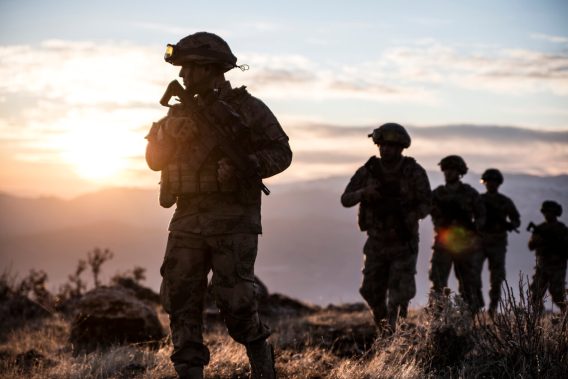Judge Denies 3M’s Bankruptcy Filing in Military Earplug Lawsuits
Editors carefully fact-check all Drugwatch.com content for accuracy and quality.
Drugwatch.com has a stringent fact-checking process. It starts with our strict sourcing guidelines.
We only gather information from credible sources. This includes peer-reviewed medical journals, reputable media outlets, government reports, court records and interviews with qualified experts.

A federal judge in charge of extensive military earplug litigation against Aearo, a subsidiary of 3M, denied the company’s Chapter 11 bankruptcy filing this month.
U.S. Bankruptcy Judge Jeffrey Graham in Indiana wrote in his denial that Aearo was a “financially healthy debtor” and “supported by an even more financially healthy, Fortune 500, multinational conglomerate.”
It is a common legal practice for companies facing mass tort litigation to file for bankruptcy. However, Graham called Aearo’s bankruptcy filing “fatally premature” and noted that unless the Combat Arms earplugs cases are resolved by agreement, it could cause a “significant change in circumstances” for the companies.
The lawsuits, one of the largest mass torts in U.S. history, allege that Aearo and 3M’s Combat Arms earplugs were defective and led to hearing loss and tinnitus for veterans and service members. About 330,000 cases have been filed and roughly 260,000 cases are pending, which represents 30% of pending cases in federal district courts.
Aearo Technologies filed for Chapter 11 bankruptcy in July 2022 to resolve the pending cases against it. It also committed $1 billion to fund a trust for the settlement. In a statement following the ruling, 3M said it is prepared to defend the earplugs’ safety.
“3M has committed to support Aearo’s Chapter 11 proceeding as the path to resolve claims more quickly and with more balanced recoveries among claimants than continued case-by-case litigation, while preserving trust funding for later claimants,” the company statement said.
On June 14, Aearo filed an appeal of the Chapter 11 denial, calling for an appellate court to review the decision to dismiss the bankruptcy filing.
3M Combat Earplugs Lawsuits
Military personnel who served between 2003 and 2015 were issued 3M Combat Arms earplugs, particularly those who served in Iraq and Afghanistan in the early 2000s when the earplugs were standard issue. Litigants claim they suffered hearing loss and tinnitus and are suing for damages. 3M and Aearo have lost 10 out of 16 cases that went to trial, resulting in payouts of nearly $300 million.
Lawsuits claim that Aearo and 3M misrepresented the results of their noise reduction rating requirement. In a 2016 whistleblower lawsuit filed by Moldex-Metric Inc., the company claimed that 3M and Aearo knew the earplugs were too short for proper insertion and that they could loosen without a soldier knowing.
To resolve the allegations, 3M agreed to pay $9.1 million. Shortly after the settlement, service members and veterans began filing earplug lawsuits.
Plaintiffs Claim Earplug Use Led to Hearing Loss
3M and Aearo supplied the U.S. military with the dual-ended earplugs, which were intended to protect a soldier’s hearing while still allowing them to hear commands. The company claimed that when soldiers inserted the olive-colored side into their ears, the earplugs would protect them against all sounds. When the yellow end was inserted, it would protect against explosions but allow the soldiers to still hear commands or approaching enemies.
Army Sgt. Isaac Rodriguez, of Fort Lupton, Colorado, said he was issued the 3M earplugs while in basic training in 2009 and used them throughout his six-year career. He said at Bagram Air Base in Afghanistan, where he was stationed, the environment was constantly noisy as large military planes took off and landed around the clock. Rodriguez said he was never given instructions on how to use the earplugs or when to insert which end.
“They gave them to us to use and said they were supposed to be the best earplugs on the market,” Rodriguez said. “We just used them, trusting that they would protect us.”
Rodriguez, who left the military in 2015, began hearing loud ringing in his ears when he started an office job shortly after his discharge. The tinnitus is often followed by a wave of nausea and dizziness that forces him to sit or lie down until it passes.
“When you’re in, you don’t really realize the long-term effects of how things are going to be,” Rodriguez said. “You just trust that [the government is] taking care of you.”
He said he’s begun the process of filing for disability compensation for his injury but has not yet sought legal help.
More than 1.16 million veterans received disability compensation for hearing loss in 2017 and about 1.79 veterans received compensation for tinnitus, according to the Hearing Health Foundation. Service members are often subjected to loud noises many hours a day with dangerously high decibel levels.